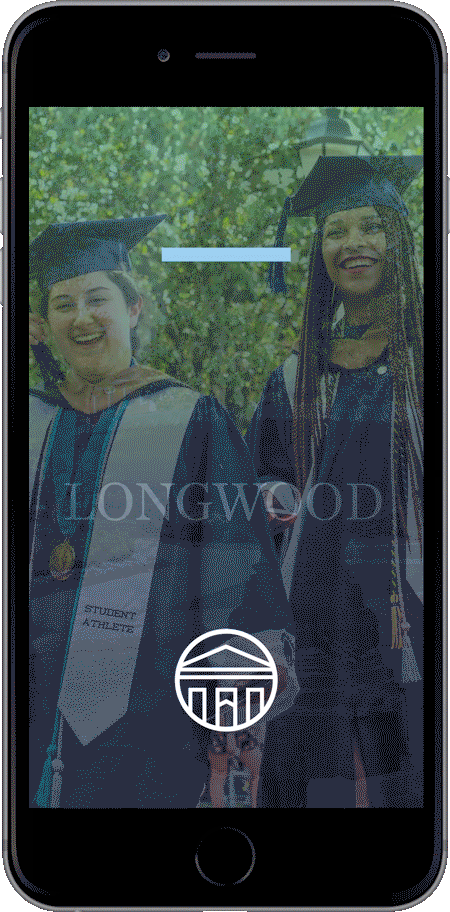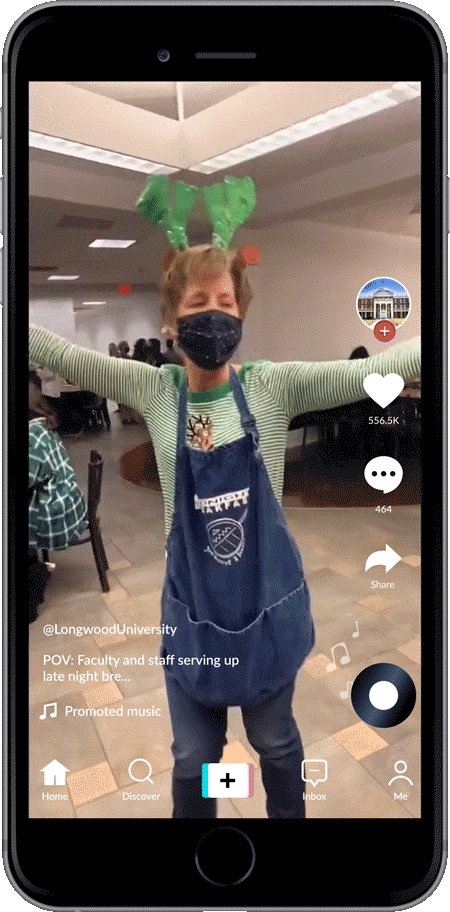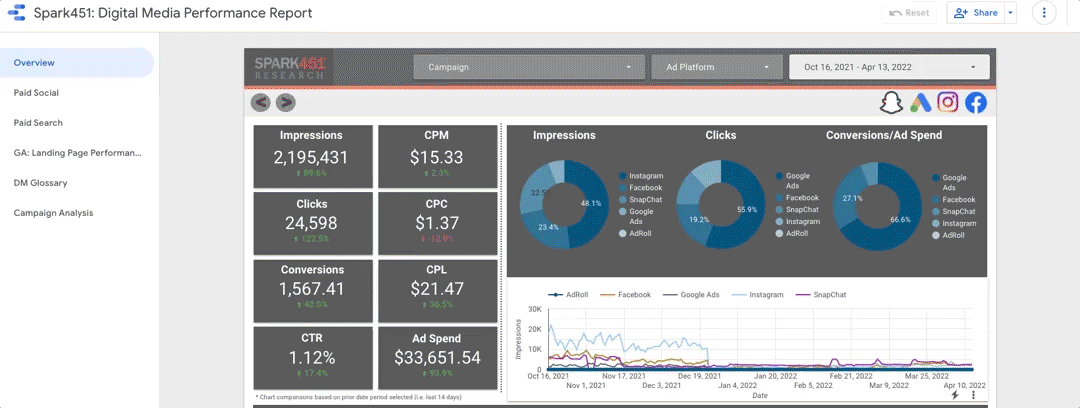The Power of Influencers
In the latest installment of our video series, “Total Conviction,” Spark451 CEO Steve Kerge discusses the important role high school counselors play as influencers in the college search process. He explores the impact that this critical group of colleagues has on juniors and seniors as they consider their college options, and provides tips for strengthening your brand awareness among them. Check it out above!
When you’re ready to engage in a conversation about creating powerful influencer communication plans for your institution, please reach out. Our team of enrollment marketing experts and insightful content strategists will be happy to help you develop a budget-friendly plan that achieves your objectives.
You can also revisit the full collection of “Total Conviction” videos here!
5 Digital Media Trends You Can’t Ignore This Year
After keeping a close eye on the performance of our partners schools’ paid media campaigns in the first quarter of this year, Spark451’s digital marketing team has identified some critical trends and insights to share. While we know that enrollment managers like you are fully immersed in one of the most stressful seasons of the enrollment cycle (decision packages, on-campus and online yield events, spring visits, open houses, that looming May 1 deadline, oh my!), it’s never too early (or too late) in the cycle to make sure you’re on top of the latest digital strategies. Plus, the time to start planning for the upcoming fiscal year is just around the corner, so making sure that your marketing strategies are in line with target audience behavior and trends is critical.
Here’s a quick rundown of the most important digital media trends that need to be on your radar right now:
1. Lean Into Video Assets
The marketing industry has long been predicting that video consumption will be the main form of creative by 2022 — and they were right! According to eMarketer, estimates show that this year, “social network video ad spending will grow by 20.1% year over year to $24.35 billion, making up over one-third of total U.S. social network ad spending.” In house at Spark451, we’ve seen major growth in video over the past year, with video creative showing higher click-through rates (CTR) than static content ads on social networks. In fact, we’ve seen several video ads, which we have run as recently as last month, exceeding our CTR benchmarks by 147%!

"We estimate that in 2022, U.S. social network video ad spending will grow by 20.1% year over year (YoY) to $24.35 billion, making up over one-third of total U.S. social network ad spending."
- eMarketer, 2022
2. Use User-generated Content
It’s a TikTok world, and we’re just living in it! TikTok really brought to life the concept of user-generated content, and almost every social platform has tried to follow suit since. Users want to be able to see the “real” deal; the “behind-the-scenes” view of whatever they’re exploring.
Are your student ambassadors running campus tours? Have them take a video snippet of a tour or a favorite location on campus. Get clips from sports events, open houses, or arts festivals — make sure you’re showing the campus in the most authentic way possible, because users often see through the polish of traditional ads. There’s still a use case for traditional ads, but 2022 is shaping up to see a turning point in increased user-generated content in the ad space.

3. Consider Connected TV
Connected TV (CTV), which allows you to stream your favorite shows and watch live TV on your smart device, became a household name at the height of the pandemic, and it remains just as popular as we attempt to transition into a post-pandemic world. CTV enables us to watch content on any device connected to the internet. With that comes the ability to advertise using video ads, in the same way commercials run on linear TV. The difference is that we can now run video ads across a variety of popular platforms and devices, such as Roku, AppleTV, Samsung, Fire Stick, XBox, and any smart TV. Additionally, we’re able to target more precisely by using data from Oracle, Nielsen, and other data sources which help us identify our very niche audiences. The biggest difference? It’s all measurable. You’ll be able to see impressions, eCPM, view-thru rates, and you’ll even have the ability to retarget users who have watched your video ad!
According to a recent Forbes article, which calls CTV the “fastest-growing video advertising platform,” “80% of TV households have at least one connected TV device (a penetration higher than cable TV).” Frankly, CTV is the most critical digital marketing tactic that higher education institutions are missing out on right now — and they need to start adding it to their marketing plans!

"CTV is the most critical digital marketing tactic that higher education institutions are missing out on right now — and they need to start adding it to their marketing plans!"

4. Bow Down: TikTok Ads are 👑
If you haven’t dabbled in TikTok Ads yet, you’re missing out on where your audience is reported to spend 25.6 hours per month (Hootsuite)! Spark451 has been running TikTok ads for our partner institutions since late 2020, and the platform keeps outperforming in engagement rates compared to Snapchat and Instagram. It’s a great tool for sophomore/junior brand outreach, brand and awareness campaigns, and event registration pushes. The secret to a successful ad? Well, you’ll have to reach out to us for that answer!
5. Access Live Insights
This last one is not a tactic or platform, but rather an absolute necessity to have in the world of digital marketing — a live dashboard to aggregate all platform data, such as ad campaign metrics and costs, on one screen that is always “on.” Constant access to this info will allow you to continually keep tabs on performance and easily identify opportunities for optimization. At Spark451, each of our paid media partners receives a live data dashboard with up-to-date analytics on all campaigns. Ad campaign performance fluctuates day by day; you should always be able to keep an eye on what’s going on!

To discuss specific ways to optimize your own institution’s digital marketing plans, please reach out. Our digital marketing specialists would be happy to discuss your current challenges and help you find budget-friendly solutions that will support your goals.
Breaking News: Spark451 Is Joining Forces with Jenzabar
Jenzabar Acquires Spark451 to Fuel the Evolving Higher Education Market
Spark451 Acquisition Further Strengthens Jenzabar’s Capabilities in Empowering Colleges and Universities to Recruit Right-Fit Students, Including Adult and Non-Traditional Learners, as Student Demographics Shift
Boston, MA—April 13, 2022—Jenzabar, Inc., a leading technology innovator in higher education serving the new student, today announced that it has acquired Spark451, a full-service marketing and technology firm providing enrollment strategies for the higher education market. The acquisition comes at a time when creative and modern enrollment strategies are critical for colleges facing declining student populations, shifting learner demographics, and other emerging challenges.
This acquisition is a critical milestone as higher education institutions transform their enrollment strategies during a time of unprecedented upheaval for college admissions. With the acquisition of Spark451, Jenzabar can offer even deeper enrollment strategy expertise and full-service marketing capabilities, including more complete support for institutional enrollment, retention, operations, management, and digital transformation initiatives. The addition of Spark451’s renowned use of data and strategic marketing techniques, including analytics and predictive modeling, helps colleges build or rebuild their brands, which has proven to achieve far-reaching enrollment goals by attracting a new student demographic.
The enrollment crisis facing U.S. higher education institutions has continued amid the pandemic. According to the National Student Clearinghouse Research Center, overall undergraduate enrollment dropped by 6.6% from 2019 to 2021, representing a decline of over 1.2 million students, while community college enrollment dipped by 13%. This enrollment decline is forcing colleges of all sizes to find new ways to build their brands, achieve their enrollment goals, and create new revenue streams by attracting non-traditional students who want to secure lucrative jobs in technology, healthcare, business, and other sectors.
“The model for higher education needs to be reinvented as learner demands change,” said Ling Chai Maginn, Founder, President, and CEO of Jenzabar. “By acquiring Spark451 and bringing them into the Jenzabar Family, we can better help institutions build future-proof enrollment strategies that allow them to find, attract, and engage with their best-fit students while simultaneously extending their reach toward the fast-growing, non-traditional student population.”
“We are thrilled to join Jenzabar, a world-class organization that shares our deep commitment to helping colleges succeed and learners thrive in this new and changing world,” said Steve Kerge, CEO of Spark451. “Together, we offer an unparalleled set of solutions and services for higher education institutions, allowing schools of all types and sizes to overcome their enrollment challenges and build a roadmap to success in an otherwise turbulent market.”
Based in Westbury, NY, Spark451 specializes in enrollment marketing, student search, creative services, and digital media, serving over 200 higher education institutions. Since its inception in 2011, Spark451 has been renowned for its creative enrollment marketing strategies. Jenzabar welcomes the entire Spark451 staff and key members of the management team, including Founder and President Michael McGetrick and CEO Steve Kerge continuing in leadership roles.
According to Maginn, Jenzabar and Spark451 share a powerful commitment to innovation and digital transformation in the higher education sector, guiding schools from traditional, paper-based methods to modern, agile, and digital-first approaches. “Spark451’s deep expertise and creativity in higher education marketing complement Jenzabar’s mission to help institutions build and achieve a long-term vision for success,” Maginn said.
About Jenzabar
Created out of a passion for education and a vision for technology, Jenzabar offers disruptive, innovative software solutions and services that empower students’ success and help higher education institutions meet the demands of the modern student. Over 1,350 higher educational campuses harness Jenzabar solutions for improved performance across campus and a more personalized and connected experience for the student. For further information, please visit www.jenzabar.com or on Twitter @Jenzabar or LinkedIn.
About Spark451
Spark451 is a higher education enrollment strategy, technology, and marketing firm that combines creativity with powerful technology to achieve measurable results. With a mission to help colleges and students fuel their future, the firm integrates a multitude of communication channels and platforms for effective enrollment marketing, student search, creative services, and digital media. Since 2011, Spark451 has worked with over 200 colleges and universities nationwide.
For more information, visit: jenzabar.com/spark451
Questions? Feel free to reach out.
What Are Students Saying About Your Slate Portal?
There are over 1,000 colleges and universities that have adopted Slate as their CRM of choice, including some of the top-ranked institutions in the nation.
With this in mind, we remind our partnering colleges and universities that your out-of-the-box application status portal is likely shared with dozens of your peer institutions. This means that any number of your applicants are comparing their experience on your website, application, and portals with other schools on the list.
How do we know? Students share their opinions for the world to read. Here’s a recent example from Reddit:
The Question: What school do you think has the worst portal?
The Responses:
- “[REDACTED] has the worst portal I’ve ever seen. It’s so outdated and you have to click a thousand times for it to work.”
- “I literally spent 5643673378 hours figuring out how to check my application status 😭 it’s way too confusing.”
- “[REDACTED]. Looks straight out of the 90s.”
- “What the heck is my applicant number and why do they need my city of birth?”
- “It’s boring and poorly designed.”
Excerpts from various posts on Reddit talking about the college search experience

Now, we get that portals in Slate can be intimidating, even if you know a little about HTML and CSS. But if you keep the following three areas in mind when (re)designing and (re)building your next portal, your prospective students will likely thank you.
1. Branding
Considering that your pool is logging into several different Slate portals throughout their college search journey, this is an opportunity to stand out. Improving your base .CSS file can have a huge impact on a student’s first impression of your page. Some of the best-looking portals we create have some impressive static content blocks with some personalized images, information, and beyond.
2. Relevance
Just because Slate offers a widget for every occasion does not mean that you need to place them all on the same page at the same time. Think about what a user needs to know and what is important to them. Use filters to show relevant information based on where a student is in the funnel.
Pro-tip: Liquid markup works in portals — show your prospects the love by personalizing your messaging based on their interests!
3. User Experience
Oh, Slate offers a three-column layout for a portal page, that’s neat! Well, considering we see over 60% of engaged admitted students using mobile devices, designing a sleek, responsive portal page should be a top priority when laying out your portal components.
If you have a lot of information to share with your prospective students, spread it out and add some tabs!
We Can Help
Spark451’s SparkAssist service can help you tap into the full power of your Slate instance by picking up wherever you and your team left off. Our experienced Slate administrators, content creators, and higher education marketing experts have the context, creativity, and technical expertise to beautify, personalize, and improve the digital experience of your prospective students, parents, and beyond.
Because we know every admissions office is different, we offer a wide variety of customizable subscription– and project-based models to ensure we’re delivering as much — or as little — as needed to meet your team’s specific needs. Let’s connect to discuss.
8 Ways to Be a Successful Enrollment Manager in 2022
Springtime has always been one of my favorite times of year on a college campus, and particularly in admissions. It’s a time for helping high school seniors and their families work through the grueling and stressful college decision process (a culmination of what is oftentimes a 12– to 18-month relationship development process). It’s a time for meeting new high school sophomores and juniors as they begin the wide-eyed adventure of exploring their college options. It’s a time when campuses themselves start to burst back to life with spring flora and fauna. And, from an administrative perspective, it’s a time to plan for the future; budgets, strategies, personnel adjustments, it’s all on the table for consideration.
So, as you enter into this all-important planning phase, in the midst of all the other on-going excitement and work to be done, I’d like to share with you some big picture strategies that will help you be a successful enrollment manager in 2022 and beyond.

1. Let the past and present inform your future
2020 and 2021 brought major shifts in the higher education enrollment landscape. Some of these shifts brought immediate financial burdens on many middle– to lower-tier, and mid-sized to small colleges and universities. Fewer students enrolled in college, particularly students of color, as well as first generation and lower income students.
Many students and families changed their college plans by limiting their geographic search of college options to stay closer to home, and affordability has become as high a priority as ever before. In many cases, this has led to students enrolling at institutions that they otherwise would not have chosen.
At the same time, we are witnessing a major shift in the national workforce. “The Great Resignation” points to a societal desire for individuals to improve their career prospects, and in turn, their overall quality of life.
These trends all point to future opportunities for colleges and universities in the coming years.
- Adult learners and degree completion seekers will be on the rise. Do you have programs to accommodate them?
- The transfer student marketplace is primed for major activity. Are you actively promoting your institution to prior-term prospects and applicants?
- Graduate programs, licensure programs, and professional certification programs will be demanded in record numbers. What does your institution have to offer?
Finding ways to take advantage of market trends will set your institution up for sustained success in the years ahead.
2. Keep a multi-year focus
This one is especially important for the managers at small and mid-sized institutions across the country. We get it, your primary focus is to bring in this class this May (or June or July…or even August). But do not forget about fueling your funnel for the next two years’ classes, or you’ll find that you’re always playing catch-up.
If you happen to fall in the category of schools that sometimes considers sophomore-junior search an afterthought, this is the year to become more aggressive. Consider this: Spark451’s original research — based on feedback from thousands of college-bound high school students — shows that 50% of students started looking at colleges seriously by the beginning of their junior year, and that number jumps to 70% by the end of junior year. If you wait for senior search to truly engage a potential applicant pool, you’ve missed out on a majority of your potential audience.
3. Look for ways to narrow your team’s focus and improve efficiency
Your recruitment staff is the lifeblood of your institution’s enrollment process, and by extension, its revenue and financial stability. Yet too many enrollment managers view their counseling staff as little more than temporary workers who are to be ridden hard for as long as they can take it, and then replaced with a new crop every couple of years. There’s a better way.
Coaching your staff on the big picture processes behind the enrollment funnel, and collaboratively building key performance indicators to be achieved at each phase of the process will empower your team to not only take ownership of the results, but to develop their own best practices to reach those benchmarks.
Additionally, by tracking and analyzing the engagement of your prospect, applicant, and admitted student pools, you can help your team to focus their efforts on the segments of the populations where they can have the most impact. Some simple tools to help in this process include:
- Prioritizing student engagement — focus on campus visitors, organic inquiries, and students met during recruitment travel.
- Utilize student surveys to assess level of interest — reach out to dormant prospects and incomplete applicants en masse with quick two– to three-question surveys to determine who’s worth tasking your counselors to follow up with.
- Track email and website engagement to help trim down your prospect pool throughout the year so you don’t waste time and energy pursuing uninterested students.
4. Secret shop your institution
Are your communication campaigns, printed touchpoints, and mobile platforms truly working the way you planned? Take the time to find out what it feels like to receive these items as a prospective student.
Create a seed email address using a test name. Inquire to your own school and track what you receive and when you receive it. Look at everything with a critical eye and try to momentarily forget your institutional knowledge. Be sure to ask yourself these questions when reviewing each item:
- Does your website truly make it easy to inquire and apply?
- Are your communications as inspirational as they are informative?
- Do your materials explain “why” as well as “what?”
Also, closely examine that first printed communication — for more than five years, students have been telling us that they enjoy personalized letters most.
Finally, venture out on an unplanned admissions tour, or send a friend or family member who can have a supportive, but critical eye. Take notes and work to make real improvements. Try to value and train those student ambassadors, as they can have such a major impact on your admitted yield.
5. Break down silos, and build bridges
College and university campuses are notorious for being a collection of departmental bubbles, or “silos,” where everyone is consumed with their daily tasks, and no one really knows what’s happening elsewhere throughout the campus community. Breaking this mold is generally beneficial for any institution, but it’s particularly necessary for an enrollment management division.
As the frontline workers and the face of an institution, an admissions staff has a unique dual perspective that can be invaluable in pinpointing necessary improvements, as well as opportunities for expansion and growth. Connecting admissions with other divisions on campus can allow colleagues in academic affairs, athletics, buildings and grounds, and other departments to understand how their day-to-day work impacts the recruitment and enrollment process. Understanding how you’re all connected is key to finding cross-campus synergies and improving community morale and camaraderie.
6. Withdraw admitted students sooner than later
Okay. This is a continuation of #3. But it’s an important enough point to reiterate. Withdrawing an admit from the funnel is not always a bad thing, especially when that student has demonstrated a lack of interest and you want to avoid wasting any more resources on them. Sure, none of us like to hear that a student is selecting a different institution, but the reality is that you will only yield about 20% of your class.
Removing those students who are not interested, but have not officially withdrawn, will help your team focus on those students where you have a real chance. It will also help you, as a manager, to make more accurate projections about your class.
7. Learn to say “no”
“You will never reach your destination if you stop and throw stones at every dog that barks.”
― Winston S. Churchill
Being focused on a set of goals also means eliminating distractions. So, when your president asks you to organize this May’s commencement ceremony when you should be focusing on bringing in the class, find a way to politely decline and help them to understand why your time would best be spent focusing on your primary objectives. What makes you a great enrollment manager is always at risk due to distractions on campus.
8. Align with trusted partners
If you’re facing any additional enrollment strategy challenges as you plan for the cycle ahead, our team of veteran admissions professionals and enrollment marketing specialists would be happy to help. Feel free to reach out today!





